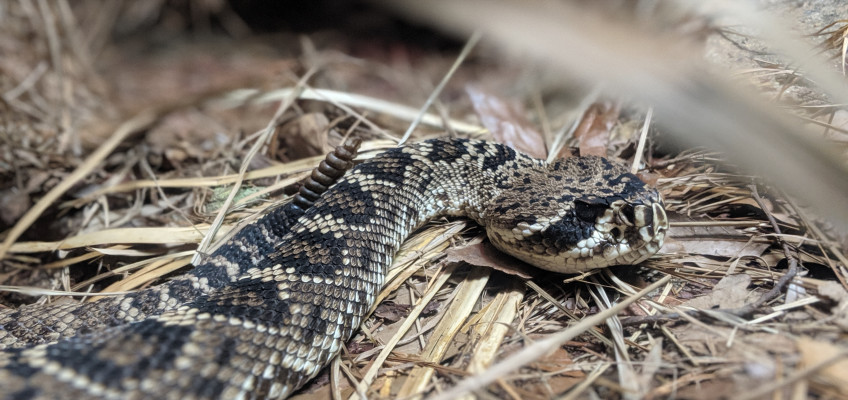Rattlesnake Safety…what you can do to mitigate risk
Hey everyone! We’re back with some Rattlesnake safety tips. Rattlesnakes are just starting to make an appearance from their cold weather brumation and with more people having lots of time on their hands we’re bound to hear about more encounters. These encounters could happen on the trail or it could happen in your own backyard. We do have a few tips to help keep you and your dog safe and socially distanced from rattlers…
Keeping your yard as safe as possible
1) Do not leave food of any kind in your backyard (dog food, cat food, accessible trash). Food attracts mice and rats, which in turn attract rattlesnakes. If your trash cans are stored in the side yard, be sure to look and listen for a snake that may be curled up near the cans before you move them.
2) If you have a garden or fruit trees, be sure to keep it maintained. Pick ripe fruits and vegetables often, and rake up any fruits that have fallen. Again, keep anything that might attract mice and rats clear.
3) Keep hedges trimmed, especially near the ground. Eliminate areas where mice and rats may shelter.
4) Move the bird feeder, birds are messy eaters! They scatter seeds from the feeder, which attracts…you guessed it…mice.
5) Patch up any gaps in your fencing, sometimes easier said than done. If your yard is backed up to a canyon, and you have the open fencing (like rod iron fencing) you may consider adding rabbit fencing. While it’s difficult to completely eliminate any and all entry points…mitigate the risk as much as you can.
6) Ammonia can be used as a deterrent, however it’s not recommended for homes with pets as it can be extremely harmful to our cats and dogs.
Staying safe on the trails
1) If your dog has never attended a Rattlesnake Avoidance clinic, and you have easy access to trails in your neighborhood, keep your dog on a 6ft leash. Even if your dog has fairly good off leash recall, help your dog avoid a painful interaction by managing their location.
2) On or off leash, do not let your dog investigate bushes, rocks or grassy or heavily mulched areas. Stay on wide, well groomed trails.
3) If your dog has attended a Rattlesnake Avoidance clinic, and they give you a signal that something isn’t right in the environment…listen to your dog! Give them the benefit of the doubt and consider heading in a different direction. Don’t force them into an area they have been trained to avoid…I repeat…if your dog gives you the signal…do not force them near the area they are trying to avoid.
4) Building on the last statement, if you see a snake sunning themselves, do not encourage your dog near the snake. Your dog may not have noticed it, if they are steering clear…don’t encourage attention to the snake. Remember, if you see a snake other than a rattlesnake and your dog show’s interest keep in mind that your dog is primarily trained on scent and the sound of the rattle. Non-venomous species like King, Racers, Garter DO NOT smell like rattlers. To your dog, those helpful and non-venomous varieties are a very different animal compared to what they were trained to avoid.
5) Dead or injured snakes are still dangerous…steer clear.

